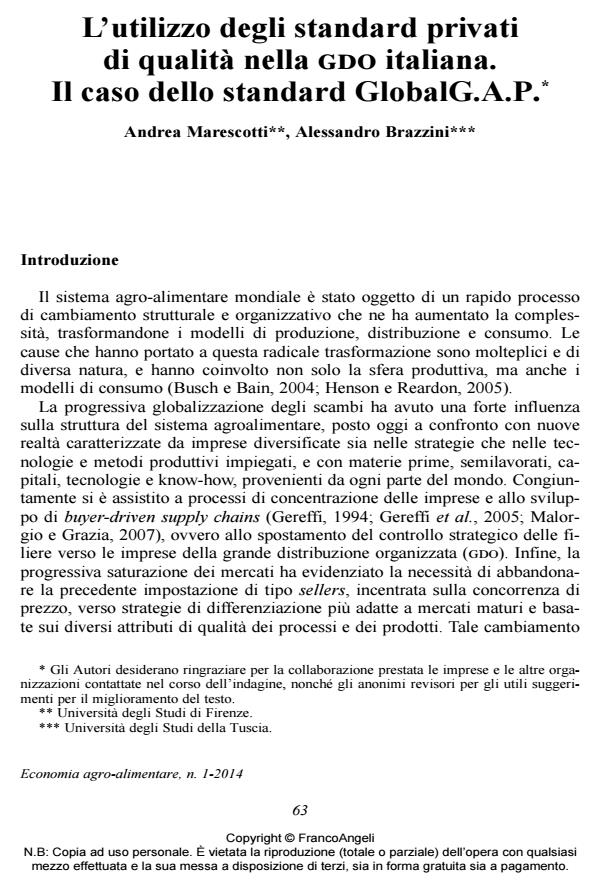L’utilizzo degli standard privati di qualità nella gdo italiana. Il caso dello standard GlobalG.A.P.
Titolo Rivista ECONOMIA AGRO-ALIMENTARE
Autori/Curatori Andrea Marescotti, Alessandro Brazzini
Anno di pubblicazione 2014 Fascicolo 2014/1
Lingua Italiano Numero pagine 21 P. 63-83 Dimensione file 74 KB
DOI 10.3280/ECAG2014-001004
Il DOI è il codice a barre della proprietà intellettuale: per saperne di più
clicca qui
Qui sotto puoi vedere in anteprima la prima pagina di questo articolo.
Se questo articolo ti interessa, lo puoi acquistare (e scaricare in formato pdf) seguendo le facili indicazioni per acquistare il download credit. Acquista Download Credits per scaricare questo Articolo in formato PDF

FrancoAngeli è membro della Publishers International Linking Association, Inc (PILA)associazione indipendente e non profit per facilitare (attraverso i servizi tecnologici implementati da CrossRef.org) l’accesso degli studiosi ai contenuti digitali nelle pubblicazioni professionali e scientifiche
Voluntary standards have gained in importance all over the world. The choice to set-up voluntary standards and their consequent widespread application came from the private stakeholders’ need to gain the trust and increase the security on the part of consumers and agro-food actors. In particular, it was a result of the negative effects caused by several food scares and the public’s difficulty in reacting promptly and efficiently to agro-food changes. Since the late 1980s, this process has been growing significantly. As a result, the setting-up of significant numbers of standards and the wide-range they cover has mirrored an ongoing transformation in food safety and food quality management among international agro-food chains. The main goal of this paper is to analyze the reasons for the wide diffusion of private standards schemes within the Italian retail market as well as obstacles it faces through the study of the Global-Gap standards case. Global-Gap is a private sector body that proposes voluntary standards for the certification of agricultural production processes around the world. Unlike other standards, Global-Gap has succeeded in establishing itself as a leader, both in Europe and all around the world. Nonetheless, Global-Gap’s geographical distribution is not homogeneous either across territories or in firms’ business strategies. The survey helped to explain the particular Italian paradox, which, on the one hand, shows a large number of farms implementing the Global-Gap standard, but, on the other hand, its relatively infrequent use by retailers operating in Italy when accrediting upstream actors. North European retailers, in contrast, adopt this standard as a sort of passkey for fruit and vegetable producers.
Parole chiave:Quality standard, Global-Gap, mass distribution, Italy
Jel codes:Q13, L15
Andrea Marescotti, Alessandro Brazzini, L’utilizzo degli standard privati di qualità nella gdo italiana. Il caso dello standard GlobalG.A.P. in "ECONOMIA AGRO-ALIMENTARE" 1/2014, pp 63-83, DOI: 10.3280/ECAG2014-001004